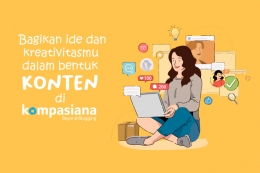Higher-order thinking skills, as defined by Bloom's Taxonomy, include analysis, evaluation, and creation (Anderson & Krathwohl, 2001). These skills are crucial to enable students to tackle complex problems, engage in serious discussions, and apply knowledge in real-life scenarios. Most standard teaching methods, however, focus on memorization and recitation and, therefore, students do not have the chance to think critically. This article discusses effective methods that teachers can use to promote HOT in class.
Strategies for Encouraging Higher-Order Thinking
1. Inquiry-Based Learning
Inquiry-based learning encourages learners to ask questions, explore independently, and reach their own conclusions. Pedaste et al. (2015) report that this strategy aids students' problem-solving and critical thinking. Inquiry-based learning is adopted by instructors through posing open-ended questions and facilitating research student-led projects.
2. Problem-Based Learning (PBL)
PBL is about giving students authentic problems to solve which necessitate critical thinking and imaginative solutions. The work by Hmelo-Silver (2004) indicates that PBL improves students' information analysis and evaluation capability, leading to enhanced learning. PBL can be integrated in the classroom by having teachers create situations when students work together to identify solutions.
3. Metacognitive Strategies
Metacognition, or "thinking about thinking," allows students to reflect on the process of their learning. Flavell (1979) points out that learning to plan, monitor, and evaluate learning develops students' problem-solving abilities. Self-questioning, reflective journaling, and think-aloud protocols are some of the strategies by which students can learn metacognitive skills.
4. Socratic Questioning
Socratic method is composed of asking students interesting questions that entail justification and more solid reasoning. The Socratic method stimulates critical thinking by the mechanism of posing questions that necessitate clarifying, analyzing, and thinking about one's thinking, says Paul and Elder (2006).
5. Technology Integration
Technology tools like simulation, gamification, and AI-based learning platforms can enhance HOT skills. Mishra & Koehler (2006) study on the TPACK framework highlights the integration of technology with pedagogy to increase critical thinking and creativity. Tools like Google Classroom, Padlet, and Kahoot facilitate collaborative learning and higher-order thinking.
In order to properly evaluate HOT, tests must be more than multiple-choice. Performance tasks, rubrics, and open-ended projects allow teachers to measure students' ability to analyze, evaluate, and produce (Brookhart, 2010). Peer discussions and reflection activities are a few formative assessments that can also provide teachers with information about students' cognitive development.
Higher-order thinking in the classroom can only be encouraged when there is a shift from memorization to learning strategies. Learning strategies like inquiry-based, problem-solving, metacognition, Socratic questioning, and technology integration turn out to be excellent means of maximizing students' thinking abilities. When teachers use such strategies, students are equipped with the critical thinking and creative skills needed to thrive in the 21st century.
References
Anderson, L. W., & Krathwohl, D. R. (2001). A taxonomy for learning, teaching, and assessing: A revision of Bloom's taxonomy of educational objectives. Longman.
Brookhart, S. M. (2010). How to assess higher-order thinking skills in your classroom. ASCD.
Flavell, J. H. (1979). Metacognition and cognitive monitoring: A new area of cognitive--developmental inquiry. American Psychologist, 34(10), 906--911.
Hmelo-Silver, C. E. (2004). Problem-based learning: What and how do students learn? Educational Psychology Review, 16(3), 235--266.
Mishra, P., & Koehler, M. J. (2006). Technological pedagogical content knowledge: A framework for teacher knowledge. Teachers College Record, 108(6), 1017--1054.
Paul, R., & Elder, L. (2006). The thinker's guide to the art of Socratic questioning. Foundation for Critical Thinking.
Pedaste, M., Meots, M., Siiman, L. A., de Jong, T., van Riesen, S. A., Kamp, E. T., & Tsourlidaki, E. (2015). Phases of inquiry-based learning: Definitions and the inquiry cycle. Educational Research Review, 14, 47--61.
Follow Instagram @kompasianacom juga Tiktok @kompasiana biar nggak ketinggalan event seru komunitas dan tips dapat cuan dari Kompasiana. Baca juga cerita inspiratif langsung dari smartphone kamu dengan bergabung di WhatsApp Channel Kompasiana di SINI







